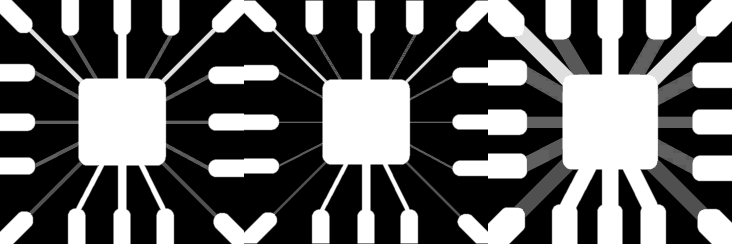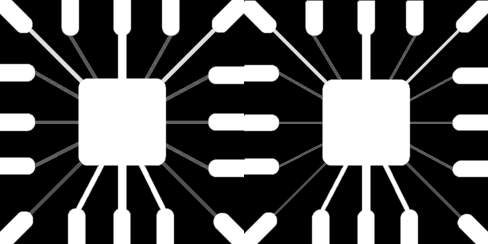dilate
The dilation operator dilate is essentially a max filter. This is a basic term in mathematical morphology — many operations are built on top of dilate and the erode operator.
using ImageMorphology
using TestImages
using ImageBase
using ImageShow
img = restrict(testimage_dip3e("fig1005")) # wirebond mask
For each pixel, dilation is the maximum of the pixels in the neighborhood. In mathematics, dilate(A, Ω) is defined as = \sup{A[p+o] | o \in \Omega}] where Ω is the structuring element.
The simplest usage is dilate(img; [dims], [r]), where dims and r controls the neighborhood shape.
out1 = dilate(img) # default: all spatial dimensions, r=1, a box-shape SE
out2 = dilate(img; dims=(2,)) # only apply to the second dimension
out3 = dilate(img; r=5) # half-size r=5
mosaic(out1, out2, out3; nrow=1)
It uses the strel_box to create a box-shaped structuring element. You can also provide a custom SE via the dilate(img, se) interface.
out1 = dilate(img, strel_box((3, 3))) # default se for`dilate(img)`
se = centered(Bool[1 1 1; 1 1 0; 0 0 0]) # match top-left region
out2 = dilate(img, se)
mosaic(out1, out2; nrow=1)
An in-place version dilate! is also provided, for instance
out1 = similar(img)
dilate!(out1, img)
out2 = similar(img)
dilate!(out2, img, strel_diamond((3, 3)))
nothing #hideSee also
erode is the dual operator of dilate in the following sense:
complement.(dilate(img)) == erode(complement.(img))trueFor bool arrays and symmetric SEs, dilation becomes equivalent to the minkowski addition on sets: .
For a comprehensive and more accurate documentation, please check the dilate reference page.
This page was generated using DemoCards.jl and Literate.jl.